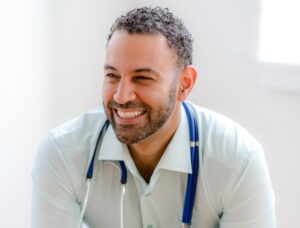We have all heard that cells are the building blocks of the body, but how do they communicate? Much like a city filled with buildings, there are many ways for messages to be passed from one structure to another. This includes emails, letters, walking, calling, or taking a taxi. Exosomes can be compared to a taxi, since they carry a message but also carry biological material to execute the message. This is similar to how a taxi can carry a passenger as well as items that they can use to perform a job. On a more technical level, exosomes are extracellular vesicles which are “important mediators of intercellular communication, as they carry lipids, proteins, mRNAs and microRNAs that can be transferred to a recipient cell via fusion of the exosome with the target cell membrane” (Hannafon & Ding, 2013).” Originally, scientists thought these cells were just transporting waste out of a cell, so they didn’t spend much time on them. Then, in 2007, researchers working at a university in Sweden realized that exosomes carried genetic material and had a dual function of acting as a messenger as well as transporting genetic material. Since they carry materials out of cells, blood tests can be performed to gain diagnostic information carried in exosomes, instead of conducting an invasive biopsy. Their curative power can be found in extracting them from stem cells, and injecting them into the body so they can support healthy cell development by managing oxidative stress. This makes them a powerful antioxidant, and potential carrier of healing biological material that can even penetrate the blood brain barrier. The National Institutes of Health (NIH) is currently funding millions of dollars worth of research on exosomes for their potential to diagnose and treat diseases.
Chronic fatigue syndrome (CFS) is also known as myalgic encephalomyelitis (ME) and is a debilitating disease that affects between 836,000 and 2.5 million Americans at a prevalence of 0.4–2.5% of the United States. The majority of people who suffer with CFS are female, and it is commonly misdiagnosed as sleep apnea, fibromyalgia, or depression. Although it is often concurrent with these and other illnesses such as irritable bowel syndrome, anxiety and allergies, there are currently no laboratory tests that can give a CFS diagnosis as serum levels of potential biomarkers are inconsistent. Therefore, diagnosis is clinical based on presenting symptoms. While Chronic fatigue syndrome has been described in medical texts since1869, it wasn’t until 1988 that the Center for Disease Control (CDC) recognized it as a syndrome and established the first formal set of diagnostic criteria. The major criteria, which are both required for diagnosis, are 1) a new onset of fatigue causing 50% reduction in activity for at least six months, and 2) exclusion of other illnesses that can cause fatigue. The minor criteria for chronic fatigue syndrome are:
- Mild fever
- Recurrent sore throat
- Painful lymph nodes
- Muscle weakness
- Muscle pain
- Prolonged fatigue after exercise
- Recurrent headache
- Migratory joint pain
- Sleep disturbance
- Neurological or psychological complaints (i.e. confusion, forgetfulness, sensitivity to light, depression, etc).
- Nonexudative pharyngitis (inflammation of the back of the throat)
Just as there is ambiguity in diagnosis of CFS, there is uncertainty in its pathogenesis as well. There have been many hypotheses including infections, genetics, physical or emotional trauma, body chemistry, environmental factors or a combination of these. What is clear is that chronic fatigue syndrome is a biological illness, not a psychological one, and includes immune system and cellular metabolism abnormalities, as well as neuroendocrine disturbances and heart rate/ heart regulation abnormalities.
Currently, there is no recognized cure or approved treatment for chronic fatigue syndrome. Doctors tend to recommend integrative treatments such as mindfulness; organization systems; counseling; a healthy diet, especially an anti-inflammatory one; nutritional supplements such as magnesium, carnitine, coenzyme Q10, siberian ginseng and rhodiola rosea; massages; good sleep hygiene; over-the-counter pain-relievers; exercise; weight loss; smoking cessation; and stress management. For those whose symptoms do not improve, there is a new hope using the power of exosomes. Clinical studies have already shown the curative power of exosomes in wound healing, tumors, cancer, orthopedic conditions, neurological disorders, and even COVID-19. There is also good research that focuses on the role of exosomes as potential biomarkers for CFS, which could pave the way for a diagnostic lab test. The current scientific literature around chronic fatigue syndrome and exosome therapy is primarily from a September 2022 study led by researchers from Tufts University in Boston and funded by the Ramsay Research Grant Program, which seeks to find the underlying causes of ME/CFS and Long Covid. The article, “Exosome-associated mitochondrial DNA from patients with myalgic encephalomyelitis/chronic fatigue syndrome stimulates human microglia to release IL-1β,” shows that 1) exosomes in patients diagnosed with CFS show an increased amount of interleukin-1 beta (IL-1β), a pro-inflammatory cytokine and 2) serum-derived exosomes from stem cells provide a novel treatment for CFS by increasing microglia (a type of immune cell that regulates and repairs). Related studies show that the power of exosomes derived from stem cells have anti-inflammatory and neuroprotective properties, which support their use as a therapeutic. While this particular application is new, the science supporting the curative power of exosomes for chronic fatigue syndrome is vast and growing every day.
References
Castro-Marrero, J., Serrano-Pertierra, E., Oliveira-Rodríguez, M., Zaragozá, M. C., Martínez-Martínez, A., Blanco-López, M. D. C., & Alegre, J. (2018). Circulating extracellular vesicles as potential biomarkers in chronic fatigue syndrome/myalgic encephalomyelitis: an exploratory pilot study. Journal of extracellular vesicles, 7(1), 1453730. https://doi.org/10.1080/20013078.2018.1453730
Devasahayam, A., Lawn, T., Murphy, M., & White, P. D. (2012). Alternative diagnoses to chronic fatigue syndrome in referrals to a specialist service: service evaluation survey. JRSM short reports, 3(1), 4. https://doi.org/10.1258/shorts.2011.011127
Fayazi, N., Sheykhhasan, M., Soleimani Asl, S., & Najafi, R. (2021). Stem Cell-Derived Exosomes: a New Strategy of Neurodegenerative Disease Treatment. Molecular neurobiology, 58(7), 3494–3514. https://doi.org/10.1007/s12035-021-02324-x
Hannafon, B. N., & Ding, W. Q. (2013). Intercellular communication by exosome-derived microRNAs in cancer. International journal of molecular sciences, 14(7), 14240–14269. https://doi.org/10.3390/ijms140714240
Jella, K. K., Nasti, T. H., Li, Z., Malla, S. R., Buchwald, Z. S., & Khan, M. K. (2018). Exosomes, Their Biogenesis and Role in Inter-Cellular Communication, Tumor Microenvironment and Cancer Immunotherapy. Vaccines, 6(4), 69. https://doi.org/10.3390/vaccines6040069
Liu, Y., Wang, M., Liang, Y., Wang, C., Naruse, K., & Takahashi, K. (2021). Treatment of Oxidative Stress with Exosomes in Myocardial Ischemia. International journal of molecular sciences, 22(4), 1729. https://doi.org/10.3390/ijms22041729
Mayo Clinic. (2023, January 21). Chronic fatigue syndrome. Mayo Clinic. Retrieved March 28, 2023, from https://www.mayoclinic.org/diseases-conditions/chronic-fatigue-syndrome/symptoms-causes/syc-20360490
Murray, M. T., & Pizzorno, J. E. (2012). The encyclopedia of natural medicine. New York, NY: Atria Books.
Sengupta, V., Sengupta, S., Lazo, A., Woods, P., Nolan, A., & Bremer, N. (2020). Exosomes Derived from Bone Marrow Mesenchymal Stem Cells as Treatment for Severe COVID-19. Stem cells and development, 29(12), 747–754. https://doi.org/10.1089/scd.2020.0080
Tsilioni, I., Natelson, B., & Theoharides, T. C. (2022). Exosome-associated mitochondrial DNA from patients with myalgic encephalomyelitis/chronic fatigue syndrome stimulates human microglia to release IL-1β. The European journal of neuroscience, 56(10), 5784–5794. https://doi.org/10.1111/ejn.15828
Vu, N. B., Nguyen, H. T., Palumbo, R., Pellicano, R., Fagoonee, S., & Pham, P. V. (2021). Stem cell-derived exosomes for wound healing: current status and promising directions. Minerva medica, 112(3), 384–400. https://doi.org/10.23736/S0026-4806.20.07205-5
About the author: Mary Genevieve Carty, MS, MHEd holds Masters degrees in Complementary and Integrative Health as well as Higher Education and is currently a doctoral student in Health Science at George Washington University’s College of Medicine and Health Science. She is passionate about holistic health and wellness, and has additional training in teaching, Reiki, and Tapping/ Emotional Freedom Technique. Her research interests include resiliency, psychoneuroimmunology, neuroplastic pain, placebo/ nocebo effect, and bioenergy therapies. The views she expresses are her own, and do not reflect any affiliation.

Medically reviewed by Dr. Stephen Matta, DO, MBA CAQSM and Mary Anne Matta, MS, MA, LAC

